A RAPID METHOD FOR OPTIMIZATION OF LINEAR SYSTEMS
WITH STORAGE
Intelligent Energy Systems Ltd., Crows Nest, New South Wales, Australia
C. H. BANNISTER
R. J. KAYE
University of New South Wales, Kensington, New South Wales, Australia
(Received March 1989; revision received January 1990; accepted January 1990)
A new method for optimizing the operation of a single storage connected to a general linear memoryless system is presented.
The model is shown to cover a wide variety of practical situations where a deterministic approximation is valid. The method
combines linear and dynamic programming concepts to produce a fast but exact optimization.
Storage devices can be used for commodities with
costs or availabilities that change with time. Eco-
nomic benefits are gained by storing the commodity
when
* its cost is low, or
* demand for it is low
for use at other times when
* the cost is higher, or
* it is in demand.
For example, storage is commonly used in large-scale
power systems in the form of dams with generation and
pumping facilities, in small-scale remote area power
supply systems (batteries) and in many types of industrial
and commercial activities.
The systems considered in this paper consist of a
single store and a production facility. In the case of an
electric power system, the production facility consists of
the model of, inter alia, the generating units, the loads
and dam spillages and inflows. In the absence of storage,
the thermal generation units are dispatched using the
merit order rule: the units are loaded in increasing order
of variable cost until the demand is satisfied. Storage
significantly complicates this process because it links
operations between time periods, so that optimization of
operations cannot be carried out independently in each
time period.
In this paper, a new exact optimization technique is
presented. Combining linear programming and dynamic
programming concepts, the technique optimizes the op-
eration of the storage by solving a sequence of small
linear programming problems rather than the much
larger, time-staged problem. By exploiting specific fea-
tures of the single-stage problem, a very rapid solution
method has been devised.
A number of mathematical methods have been applied
to the operational optimization problem, including dy-
namic programming (Lukic 1982), the maximum princi-
ple of optimal control (Martin and Dillon 1977) and
linear, nonlinear and mixed integer programming
(Meliopoulos and Skordilis 1979, Halliburton and
Sirisena 1982, Habibollahzadeh and Bubenko 1986).
However, the applicability of these methods to practical
problems has been limited by their computational bur-
den. For example, the number of constraints in a simple
linear programming formulation of a storage optimiza-
tion will be proportional to the number of time steps.
Solution time will vary approximately as the cube of the
number of time steps. This places a relatively small
practical limit on the size and duration of problems that
can be solved.
Dechamps, Nuytten and Lee (1980) derived the
Kuhn-Tucker necessary conditions for the solution of a
particular deterministic single storage problem. These
conditions were then used to develop a heuristic solution
Subject classifications: Dynamic programming, deterministic: rapid, exact dynamic programming. Production/scheduling: optimal utilization of
storage. Programming, linear: fast optimization of linear systems.
Operations Research
Vol. 39, No. 2, March-April 1991
220
0030-364X/9 1/3902-0220 $01.25
(D 1991 Operations Research Society of America
�
method, avoiding the need to solve the very large linear
program directly. The method was reported to be some
ten times faster than a dynamic programming approach.
However, the solutions exhibited some departure from
optimality, presumably because the heuristics did not
lead to the Kuhn-Tucker conditions being satisfied
exactly.
In the work of Daryanian (1986), the optimization
ofthe operation of a simple production process with stor-
age was formulated as a time-sequenced network. A spe-
cial purpose solution procedure for this problem was
developed and tested. It performed much faster than a
standard simplex routine. However, this algorithm can-
not handle complex production facilities that exhibit
time-variation in the inputs, outputs, production pro-
cesses or costs.
In this paper, we present a new, efficient and exact
method for solving a very general class of deterministic
problems with a single storage. In Section 1, the model
of systems to be optimized is described. It consists of a
single storage and a production facility, which is de-
scribed by a piecewise linear production cost function.
This function is constant within a number of time inter-
vals that make up the study period. Some examples, also
presented in Section 1, illustrate how this model can be
used to describe a wide range of industrial situations.
One contribution of this paper is the recognition that the
modeling of the production facility and the optimization
of the storage operation can be separated.
In Section 2, the storage optimization problem is
formulated as a linear program. This formulation is used
in Section 3 to derive certain general properties of the
optimal solution which, therefore, also apply to the
dynamic programming solution. Key among these is the
central role played by the Kuhn-Tucker multiplier asso-
ciated with the continuity equation, which describes the
operation of the storage. This multiplier can be shown
to equal the incremental value of commodity in the
storage.
These properties are exploited in Section 4 to develop
the solution method, which amounts to solving a small
linear program at each time step. However, by further
exploiting the special properties of the problem, a solu-
tion technique that is much faster than the simplex
method has been developed. In Sections 5 and 6, illustra-
tive examples are detailed and discussed.
The procedure gives exact results because it systemati-
cally and explicitly satisfies the Kuhn-Tucker necessary
and sufficient conditions for the solution of the linear
program. Although the method uses dynamic program-
ming concepts, no discretization of the storage space is
required, thus avoiding the usual approximations associ-
ated with dynamic programming.
Rapid Optimization of Linear Systems / 221
1. SYSTEM DESCRIPTION
1.1. The Production and Storage Model
The system whose operation is to be optimized consists
of two components: a storage and a general, memoryless
production facility which feeds material into and out of
the storage, as shown in Figure 1. The time period under
study, to < t < T, is partitioned into K time intervals. It
is assumed that the flow rate of material, the state of the
production facility and the constraints on the amount of
storage are constant over each interval.
Thus, if the time points that partition the period under
study are
t1 <
. . . < tk <
t 0<
then for k = 1, ...
t < tk', has duration
< tK= T
, K, the kth time interval, tk-l <
k-i
'A tk = t k-
as shown in Figure 2.
(2)
The state of the storage is characterized by x k, its
level at time tk. The physical constraints on the storage
are expressed by
Xk.
Xk < Xax
(3)
where the upper and lower storage limits Xmk and
min can change with interval k.
The net average flow rate from the store during the
kth time interval is uk. Physical constraints on it are
expressed by
Umax.
(4)
Umk~l? 0. If, on the other
hand, the production process supplies material to the
store, then uk< O.
The continuity equation relates the level of storage at
the beginning of the kth interval and the flow rate during
this interval to the level of storage at the end of the
interval by
k-i
- Uk.5Atk)
Xk =
In some situation, some values of x k will be infeasible:
i.e., there exists some m > k such that for all allowable
flow sequences uk+1,...
(i.e., such that Ut in?
, U f
fk(Uk)
= production
cost ratema
u
Um
< k < Uk
max
RODUCTION<
FACILITY
Figure
1.
The
production
facility
and
storage
Xka
k
modlin
Figure 1. The production facility and storage model.
�
222
/ BANNISTER AND KAYE
At
At k
At
time,t
0
U3
Uk
U
a2
u~ 1
u~
u~1 ~k
U
t?
t 1
tk-
tk
tK
tK
T
k
k
-
k
k k
k
k
k
kth
interval
Figure 2. Partition of the time period into K intervals.
1<
6k
=03-
k
k
6Tu3k=IO
Figure 4. Definition of 6 ujk
flow
~~~~~~~~rate
for n = k + 1, . , m), the level of storage at
Un Um
time tm obtained by repeated application of (5), xm,
will not obey the storage level limits (3),
either xm > Xmax or xm < Xmn.
(6)
If the net flow rate from the storage during the kth
interval is uk, then the net cost per unit time incurred in
the production facility is denoted as f k(Uk). Note that
f k(Uk) can be negative, denoting a net profit. The total
net production cost during the kth interval is f k(Uk)A tk.
In this paper, it is assumed that for each interval
k = 1, . . . , K, the production cost function fk(uk)
is
piecewise linear and convex in uk, as illustrated in
Figure 3. The break points in the slope of the function
are labeled Uk, j= 0,. . . , jk, where
Uk=wk< Ulk<
...
< U
<
...
< U~k
= Uk.
(7)
To represent the function f k(Uk) in a more convenient
jk are defined as
form, the variables 6uj/, ]=1,...,
functions of the flow rate uk by
r
Uk
Uk-Uk
gk
if Uk< Y/?-i
if U1 < Uk< Uk
if Uk < uk
(8)
(see Figure 4) where
gI%41k
Uk1
(9)
The storage control variable uk can then be written as
jk
U
Uok + E u$.k(10)
j=1
,Ki
fk (uk)
I
I
I
fk
siope
C
i
L:
X
,L
Figure 3. Production cost function f k( *).
Equations (8) and (10) show that the variables 6uk
jk are an equivalent representation of the
J = 1,...,
flow rate uk and, thus, define a change of variables for
the storage optimization problem.
As shown in Figure 3, define
fk
fk(Uk)
(11)
and let
function fk(.)
that is
be the negative slope of the production cost
in the jth segment (Uj
k Cy+1
(14)
Initial and final conditions are required to optimize
operations. An initial storage level will normally be
given. Terminal conditions can be described by a termi-
nating cost function v K(.) with a restriction on the range
of allowable final storage levels X4i < x < XK . It is
assumed in this paper that the terminating cost function
is convex and piecewise linear so that it can be repre-
sented in a similar way to the production cost function
fk(.)
in (13).
In some instances, a specific terminal storage level,
XtaKrget is required. This can be achieved by setting both
the upper and lower limits on storage levels equal to the
target, so that
Xm
target
Xmax,*(1
While this formulation is quite general, as will be illus-
trated by the examples below, it imposes the following
restrictions:
1. the formulation is deterministic: at the kth time
interval, all subsequent values of the production cost
function fm(*) and limits Umin Ummx, Xmin and
Xmax are known exactly for m = k + 1, ... ., K;
�
2. the production cost does not depend on the level of
storage;
3. losses from the store do not depend on the storage
level;
4. there is only one storage device.
1.2. Convex Piecewise Linear Production Facilities
In the above formulation, the operation of the production
facility is represented by the production cost function
and limits on the flow rate Uk. This model cap-
fk(.)
tures a wide variety of production facilities made up of
connections of components with:
a. limits on the rate of output, input or throughput;
b. variable costs which can change as linear or piece-
wise linear functions of output, input or throughput;
and
c. operating characteristics in each time interval which
are not affected by operations in other time intervals
(i.e., memoryless).
For a given flow rate from the store, u k, a least cost
solution to the storage optimization problem requires that
operating costs within the production process also be
minimized. It follows that for each value of uk in the
feasible range, f k(Uk) is the sum of the variable costs of
each component, given that the facility is operated to
minimize this total variable cost, and that the flow rate
from the store is uk. Thus, calculation of the function
f k(.) will, in many cases, require the solution of a
family of separate optimization problems, parameter-
ized by the flow rate uk. This is illustrated by three
examples.
Example 1: Simple Merit Order Model
The production process illustrated in Figure 5 consists of
a demand for a particular (homogeneous) product (the
load) and N production units, each with different pro-
LOAD
..
>;t~~~~~o?
UkXk~~~~in
U
k
Rapid Optimization of Linear Systems
/ 223
duction capacities and variable cost rates. It is assumed
that the variable cost rate of each unit does not vary with
time of output. The demand varies over time, but in a
piecewise constant manner. It is also assumed that the
demand must be met. The demand can be less than,
equal to or greater than the total output of the production
units, the difference being the flow rate from the store.
This simple model can represent an electric power sys-
tem with a single pumped storage or a manufacturing
facility.
For a given k and uk, the total load on the production
units, r k, can be found as the difference between the
demand and u k (see Figure 5). The sum of the variable
costs of the production units is minimized by loading the
units in merit order: Starting with the unit with the least
variable cost rate, units are loaded in increasing order of
variable cost rate until the total output is
k. If U k is
slightly increased, so that 7rk is slightly reduced, f k(Uk)
will be reduced at the rate equal to the variable cost rate
of the last unit to be loaded (the marginal unit). Hence,
the production cost function is piecewise linear.
The maximum flow rate out of the store, Uk
, will be
determined by the lesser of the demand and the outflow
capacity of the connection from the store to the load.
The minimum flow rate, Uk. , is determined by either
the spare capacity (i.e.,
the total capacity of all N
units less the demand) or the inflow capacity of the
connection.
Example 2: Network Model
A more realistic model of a pumped storage electric
power system, similar to that used by Dechamps,
Nuytten and Lee is illustrated in Figure 6. A time-
varying load is connected to the same bus as a set of
thermal generating units, each with a different capacity
and variable cost. A large opportunity cost is incurred
for each unit of demand that is not satisfied. This can
happen either for economic reasons or because there is
insufficient capacity. A pumping unit draws electrical
Gi
~~~~~~STORAG
ll1
0
1
1
-
X
k~~~~~~~~~in
GN
PRODUCTION
~~~~~~~~~~~~~~.s..
e
S. .... ......
FACIL .
o
s
INFLOW
k
HmDR
PUM
l
k
HYDRO
GEN.SORG
~~~~~~~~~~~~~~~~Xk
Figure 5. Simple merit order system.
Figure 6. Network model of a pump storage hydroelec-
tric power system.
�
224
/ BANNISTER AND KAYE
energy from the bus and converts it to stored potential
energy with an efficiency that is less than unity. A
hydrogenerating unit, also with an efficiency that is less
than unity, can deliver electrical energy to the bus. In
addition, there is a known natural water inflow pattern,
and water spillage will occur if the upper storage limit is
exceeded. By connecting the natural inflow and the
spillage to the common storage input/output point as
shown, a boundary can be drawn to separate the produc-
tion facility from the storage.
The production facility has a linear network structure,
with each device shown being an arc with:
a. upper and lower bounds on throughput,
b. a cost rate, and
c. a gain on the flow within it.
A more elaborate linear network model could be con-
structed including, for example, lossy transmission lines,
thermal generating units with multiple incremental cost
blocks and restrictions on a common fuel supply to a
subset of generators.
Modern efficient network programming solution pro-
cedures can be adapted to solve for the complete produc-
tion cost function f k(*) using parametric techniques
(Heesterman 1983, 284-288). The result can be shown
to be piecewise linear and convex. The computational
effort involved is not much greater than solving a single
network flow problem of the same size.
Example 3: General Linear Model
There are many production processes with time-varying
parameters which do not have a network structure. For
example, if several different commodity streams are
joined in a fixed ratio, then the process cannot be
described by a network model, although it can still be
described by a set of linear relations.
For fixed uk, calculation of fk(Uk)
for models de-
scribed by linear relations involves solving a linear
program. There are efficient procedures for charac-
terizing each solution of a linear program as a model
parameter (which, in this case, is uk) that is varied
(Heesterman, 284-288). Furthermore, the optimal value
of the objective function will be a piecewise linear and
convex function of the parameter.
2. LINEAR PROGRAMMING FORMULATION
tk-1
(i.e.,
Suppose at some time
for some ke
{1, ... , K }) that the storage level is Xk- 1. The goal is
to choose a sequence uk, Uk+1,
..., uK of flow rates
which minimizes the total operating costs up to the time
horizon t K. The terminating cost function v K(.)
is
given. The problem can be expressed as a mathematical
program as
vk-l(Xk-i)
K
= min{ E
m =k
(fm(um) Atm) + vK(xK):
for m =k
...
, K:
.m
=Xml_
UmAtm
XmM. < M < XmaX}.
(16)
Using (10) and (13) to express um and fm(um)
in
terms of 6uT for je
,.
., jm} is given by
Vk-
k
( X
)
= minm { 1
K
m=k L
im
- E CJ6ul Attm + VK(XK)
j=
I
for = k, ... I K:
0 <' 6U
3. DYNAMIC PROGRAMMING FORMULATION
In the dynamic programming approach (Bellman 1957),
the principle of optimality is used to develop, for arbi-
trary k = 1, . . . , K, a relationship for the total cost
function v k- 1( * ) defined in (17) in terms of the total cost
for the next time interval. Starting with
function v k(.)
the terminating total cost function vK(. ), this relation-
ship can be used recursively to find v k(.)
1,...
uo, ...
stage.
,1,0. The optimizing sequence of flow rates
, uK can then be found using a simple forward
for k = K -
The recursive relation between v k-i (xk- ) and
V k(Xk)
is
k-1(Xk-1)
min
f
f gk1
k
E Cj6U1
j=l
tk+vk(Xk)
0 < 6u
gj
for j = 1,
Jk
XmiIn
/ BANNISTER AND KAYE
226
The convexity of this function implies that d4 decreases
with i. Thus, without loss of generality, it is assumed
that for E-
k_
1,
1'.
.
di > d+1.
Proposition 2. For each ke { 1,...
, K}, necessary
and sufficient conditions for the solution of the
single-stage dynamic programming problem in (19)
are that there exists
(28)
pka uforje{1
,Jk} and
< forie{1,
...Ik}
such that these three conditions hold:
I. Forj= 1,...,
jk
0
if Ck < pk then W u
if c _=pk thenO?u>,g
pk then 6
g
{I.
..Ik}
and Pk
such that
-_ci Atk' +pkAtk+ ykz=O
j= 1
jk
dik+ pk+Gk=O
i= 1, ...
Itk
xt+? E a-X_Xk-
i~~~~l~
IkrJkl
+ Iuok+Z
j=l
I kAtk=o
(33)
(34)
(35)
with complementary slackness conditions for j
1,.,,
j ok
and for
i1, .. .>I
(29)
ok
' 40 if ax> =O
=o
o
if O<6x
if xk =hk
H
(37)
II. For i = 1, ...,Ik
if di < pk then Wx -?
if d _=pk then O <
if dc > pk then x = h
h Ci[fu
J
l
jo
jk Atk+ Vk
0
6u<
gj
for j= 1,
i= 1
d x k1
-
Jk
Zi O
yok
6X ai=
I
Xk-1
0
Uok+
6Uk
1:
- 1
A
t
0 < bx < h
for i= 1,...Ik
(32)
where the last line expresses the constraint on the storage
level xk. Note that the parameter x k-1 appears only in
the storage continuity equality constraint.
The Kuhn-Tucker conditions are that there exists
,
for ie
8uk, G
for je{1
..,
J'} and
Noting that A t k> 0, it can easily be shown that
(29)-(31) are equivalent to (33)-(37).
The proof of the next result follows directly from the
previous proof.
Proposition. Fork=1,...,K
dvk1(xkl)
k
almost everywhere.
(38)
Thus, the marginal value of an additional increment of
is given by the storage
storage contents at time tkil
continuity multiplier pk. Furthermore, it can be shown
(Kaye 1987) that the values of this multiplier, calculated
for a sequence of single-stage problems in (19) are the
same as those calculated for the large-scale problem
in (17).
From the Kuhn-Tucker conditions for (16) it can be
shown that ji' only changes when the storage trajectory
hits a limit, so that
if xkI=X
a
ek+e
then pk+1 pk
(39)
The sensitivities of the total costs to the parameters Xtax
and Xmm can be calculated from the value of pk
Sensitivities to the parameters of the production cost
function can also be calculated. Further details can be
found in Bannister (1989).
�4. THE SOLUTION ALGORITHM
The results of the previous section are used to derive a
simple, exact and efficient algorithm which generates the
total cost function vk-i (), given a total cost function
Vk( ) and a production cost function f k(. ), both of
which are convex and piecewise linear. This procedure
can be applied recursively for k = K, K - 1, ... , 1 so
that each vk( ) function is characterized. The optimal
flow rates and storage levels can then be found using a
simple forward stage, similar to that used in a standard
dynamic programming approach.
For each feasible value of xk-1
there exists a p k
that satisfies the conditions of Proposition 2. For each
possible value of pk define
k(
P
k)=
x
k-i. p satisfies theconditions
of Proposition 2for x
i kI
,
)
40)
The set 92 k( pk) will consist of either a single point or an
interval. The algorithm proceeds by identifying this set
for each possible value of pk.
There are four possible cases.
Case 1
pko ? C,
dik: i = I, ..ik
j
I
j
k}
Case 2
pk =C *
for some j*=1,
Jk
and
pk
{d
IC:
l
Ik}
Case 3
p =di* for somei*=1,...,I
and
pk
{ck:j =
, ...,Jk}.
Case 4
pk =Cj/* for some j* =1.Jk
and
for some i* = 1,. . .,. I.
p =di*
Each case will be examined.
Case 1
c,
dik:i = II . ..
pko ?
From (14), there exists j*e{1,
k
c1 > P > c1* +, so that
Iik;
j=
k
k
I
jk}
. . .,
jk}
such that
Rapid Optimization of Linear Systems / 227
and
C1 < p
k
k
1
for j =j* + 1,
.
j
Jk
(41)
It follows from (29) that
bUk = gj
for j = 1,
j*
and
bu = O forj=j*+1,...,
jk
so that
uk= Ukj*.
Similarly, from (28), there exists i* E{ 1,..
that di >pk>
xk=X
Thus, by (31)
so that
d*+,
.
Xk1
= Xk*+
Uj Atk.
(42)
(43)
, I'k} such
(44)
(45)
There is thus only one value of x k-i corresponding
to values of pk in the range
max cj*+1,c4+1}
di*+ 1
From (28) there exists i*e{1,
di* >
so that from (30) and (27)
xk =X.
. .,
I'} such that
(48)
(49)
(50)
It follows from (31) that such values of pk correspond
X
TufA tk.
to values of x k-1 in the range
+
X/k+ U)k Atk xkl?
(51)
This range can be constructed on a t - x plane as the
wedge shaped region enclosed between the two rays of
slope -
and - U'T, both emanating from the point
(tk, X/*), as shown in Figure 8. Within this region, by
(38):
a Vk_ __
j1
1
)
(
k
- p
_ k
-c1*.
x
(52)
�
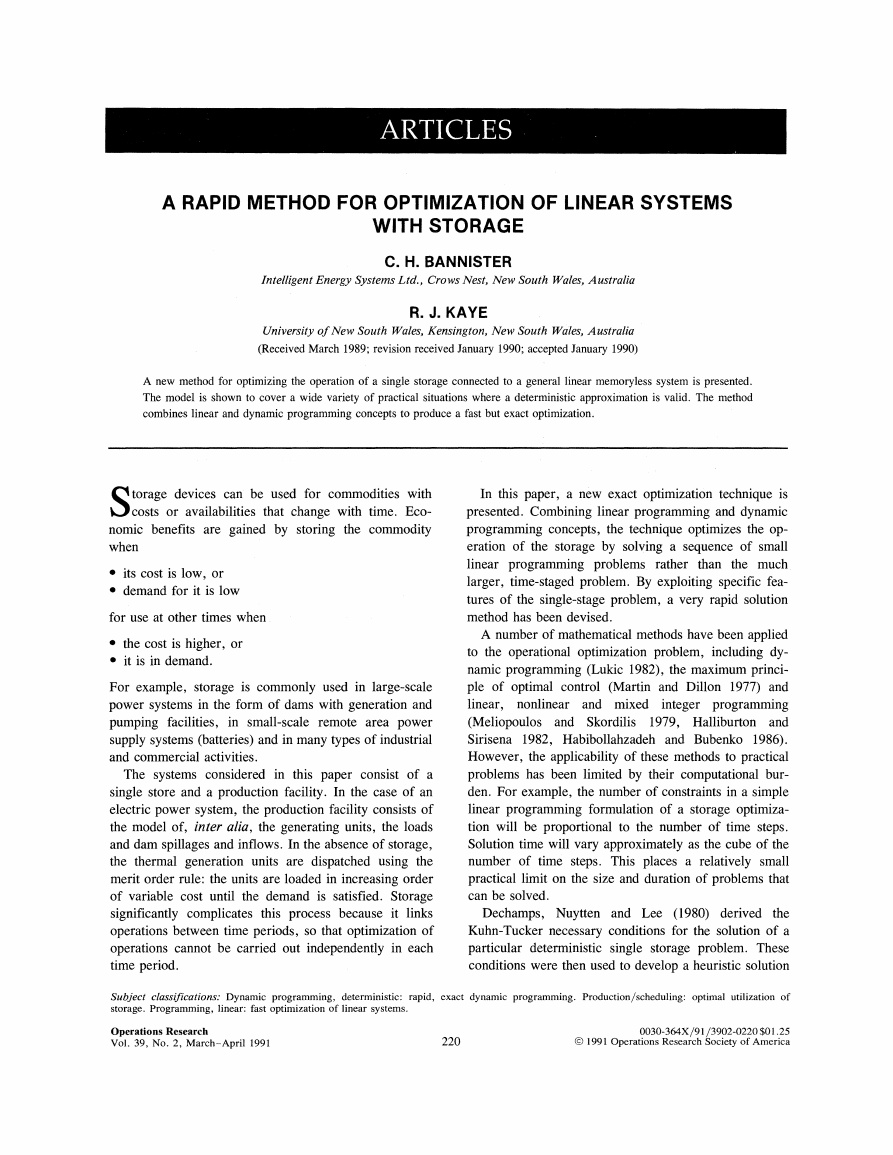
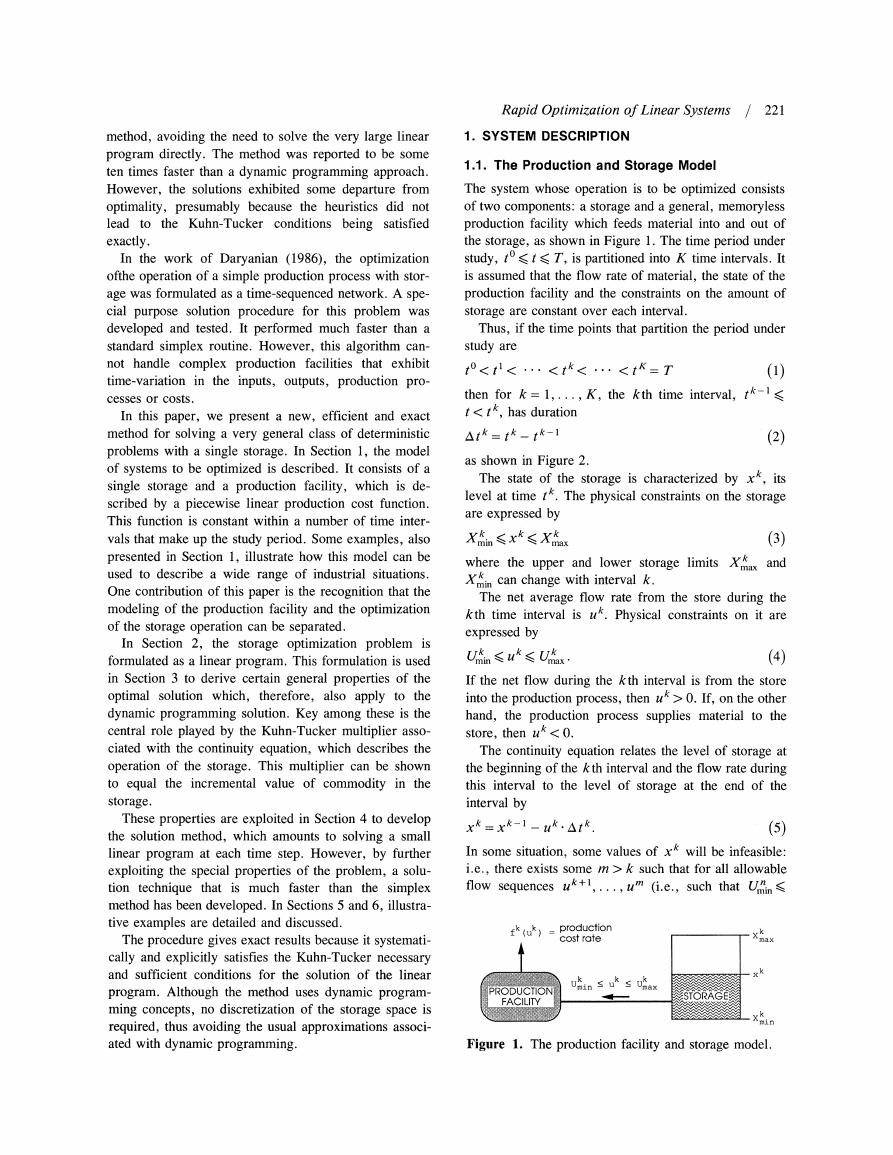
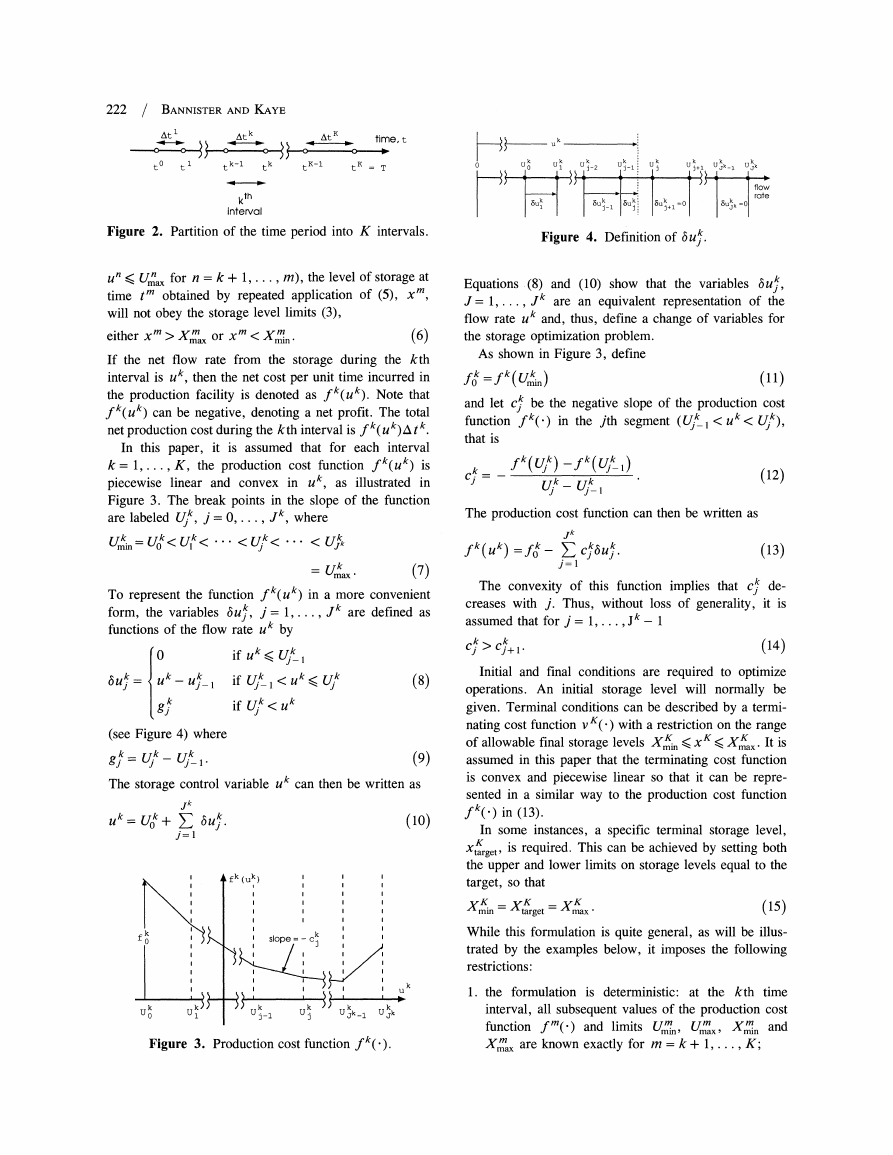
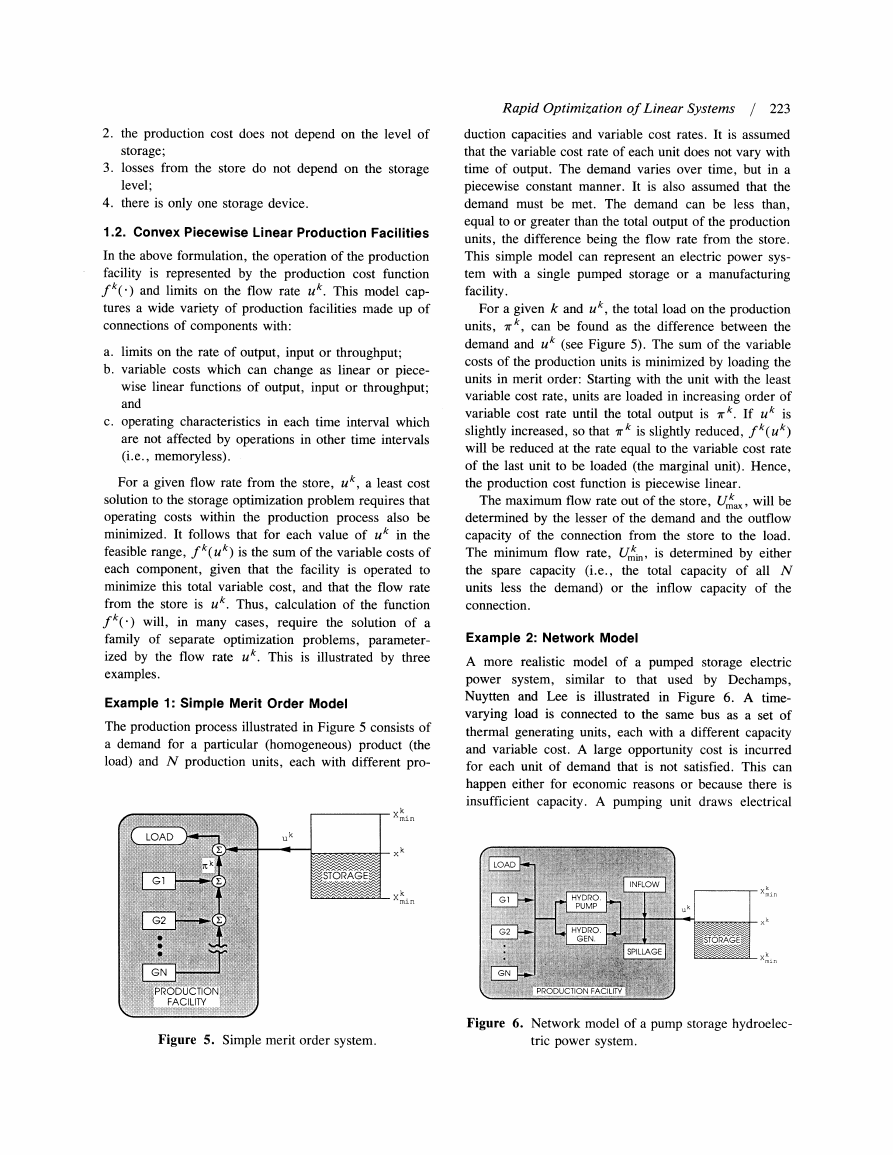
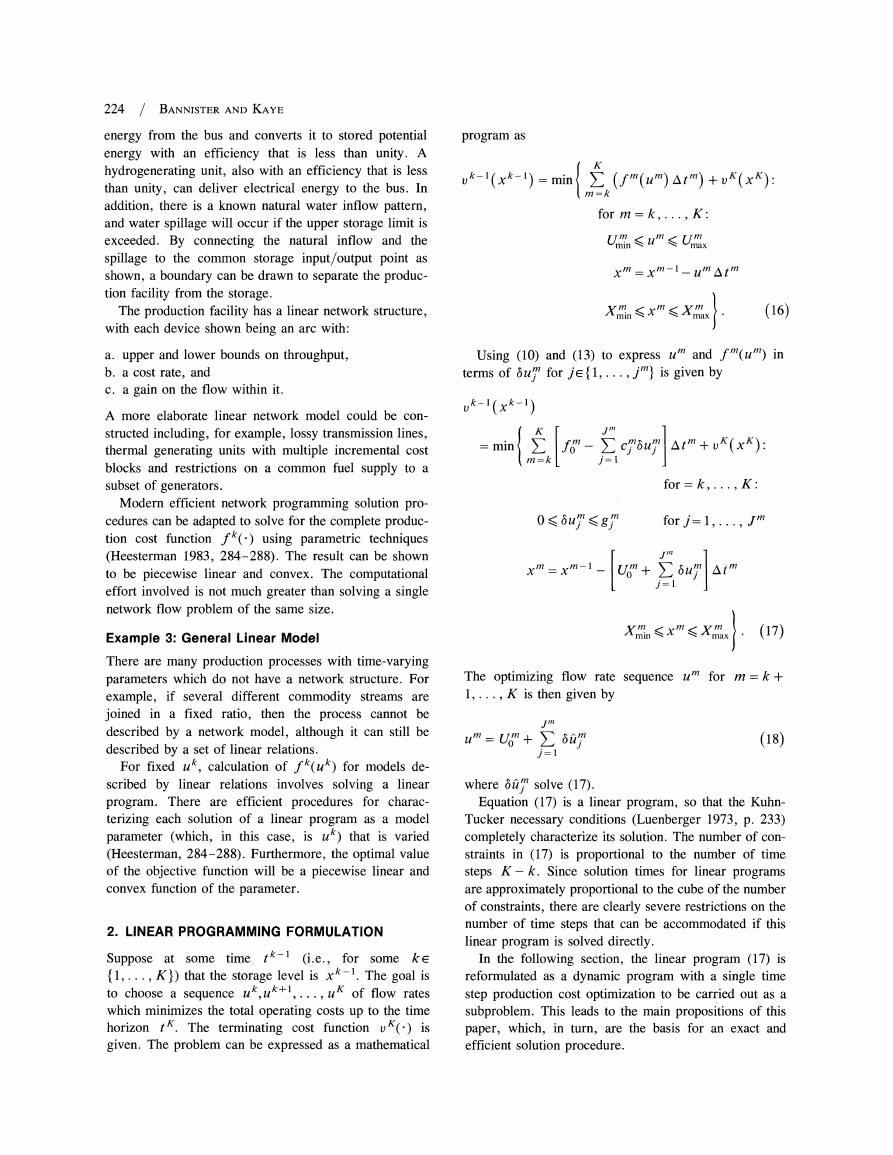
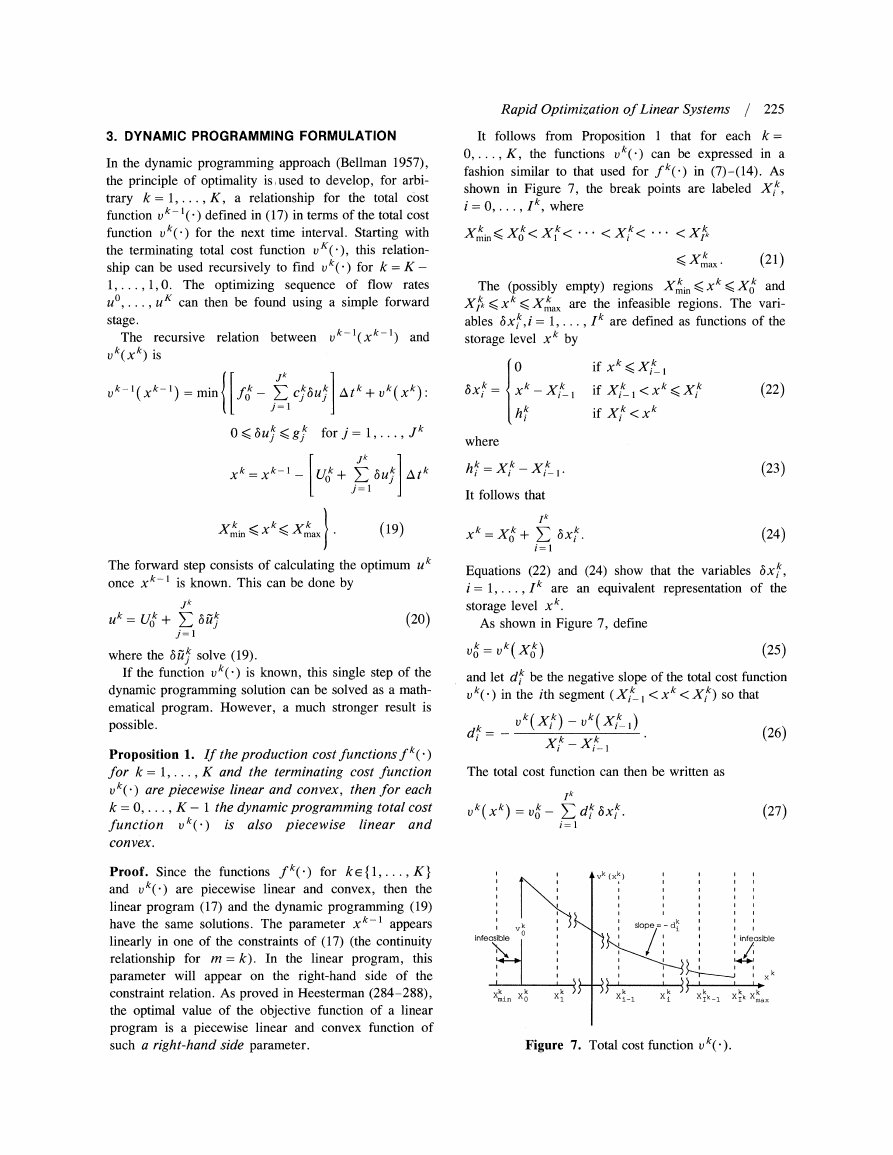
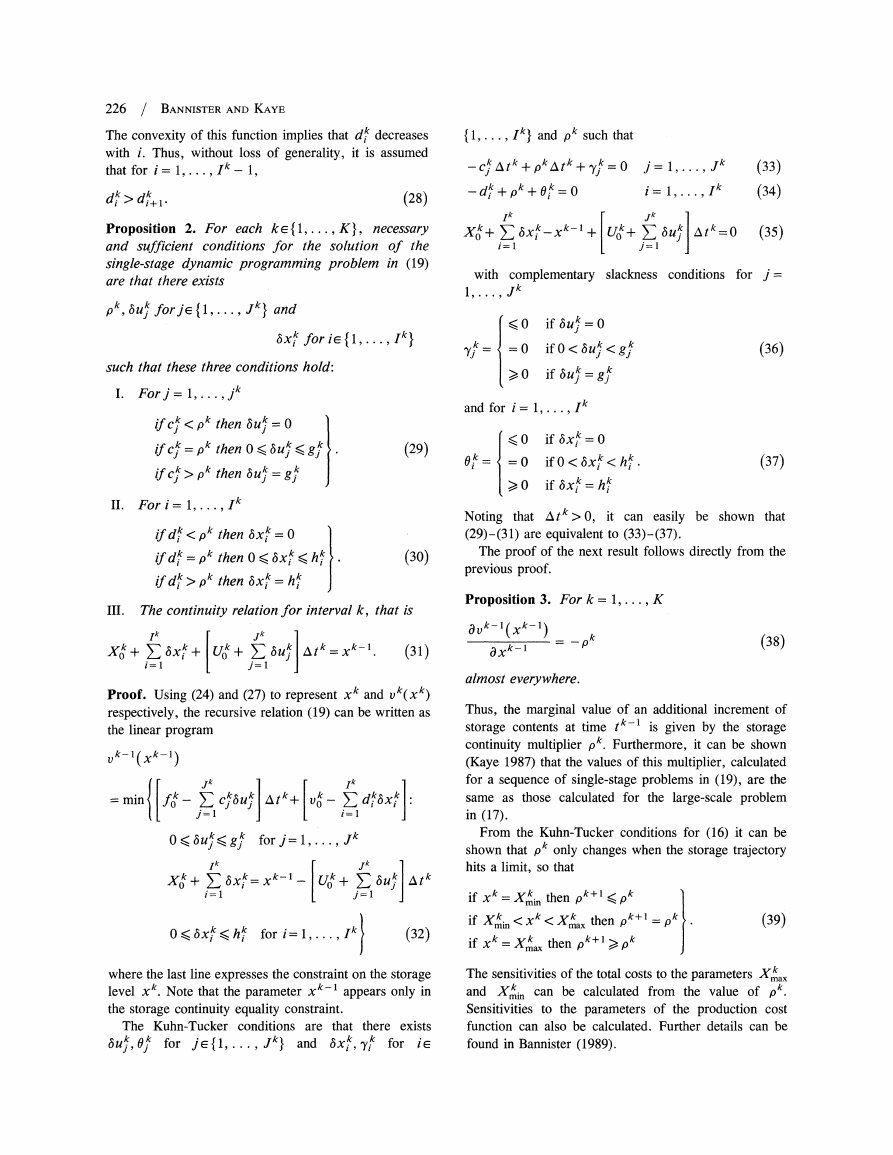
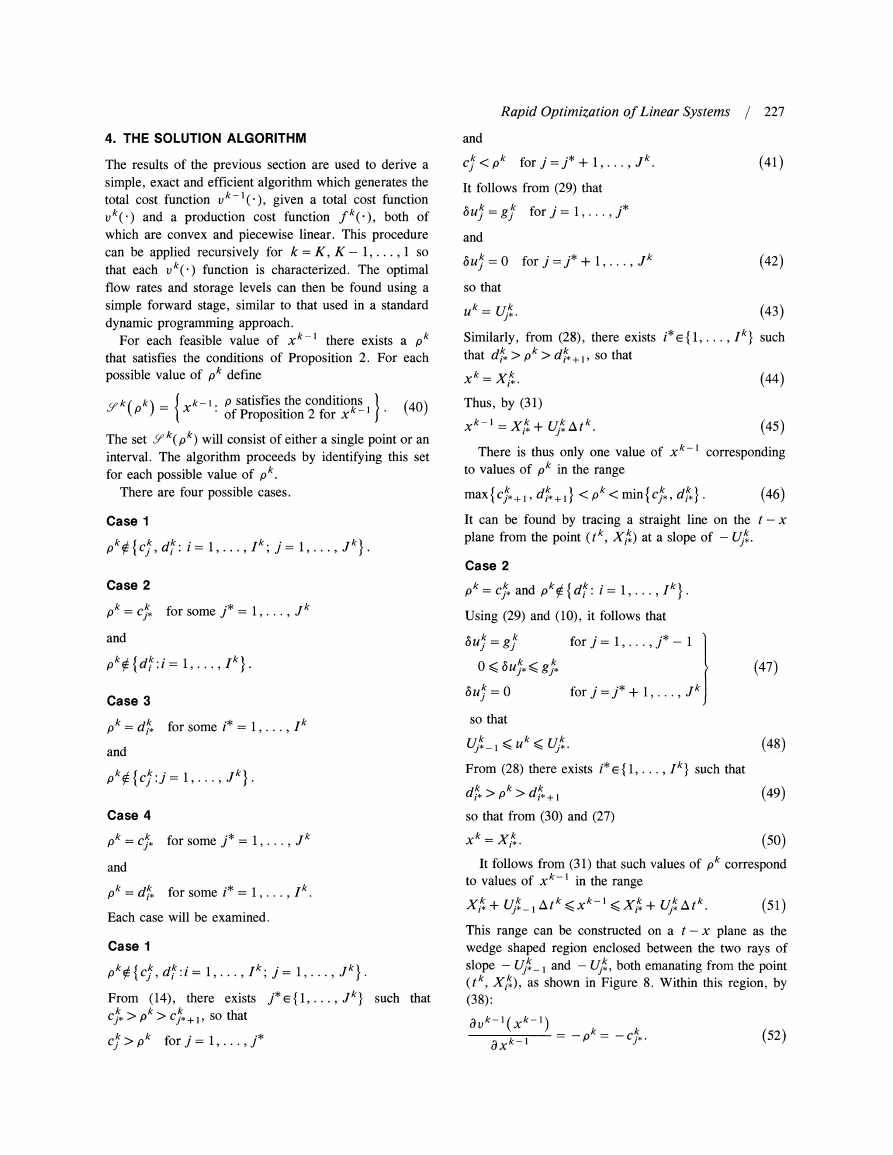








 2023年江西萍乡中考道德与法治真题及答案.doc
2023年江西萍乡中考道德与法治真题及答案.doc 2012年重庆南川中考生物真题及答案.doc
2012年重庆南川中考生物真题及答案.doc 2013年江西师范大学地理学综合及文艺理论基础考研真题.doc
2013年江西师范大学地理学综合及文艺理论基础考研真题.doc 2020年四川甘孜小升初语文真题及答案I卷.doc
2020年四川甘孜小升初语文真题及答案I卷.doc 2020年注册岩土工程师专业基础考试真题及答案.doc
2020年注册岩土工程师专业基础考试真题及答案.doc 2023-2024学年福建省厦门市九年级上学期数学月考试题及答案.doc
2023-2024学年福建省厦门市九年级上学期数学月考试题及答案.doc 2021-2022学年辽宁省沈阳市大东区九年级上学期语文期末试题及答案.doc
2021-2022学年辽宁省沈阳市大东区九年级上学期语文期末试题及答案.doc 2022-2023学年北京东城区初三第一学期物理期末试卷及答案.doc
2022-2023学年北京东城区初三第一学期物理期末试卷及答案.doc 2018上半年江西教师资格初中地理学科知识与教学能力真题及答案.doc
2018上半年江西教师资格初中地理学科知识与教学能力真题及答案.doc 2012年河北国家公务员申论考试真题及答案-省级.doc
2012年河北国家公务员申论考试真题及答案-省级.doc 2020-2021学年江苏省扬州市江都区邵樊片九年级上学期数学第一次质量检测试题及答案.doc
2020-2021学年江苏省扬州市江都区邵樊片九年级上学期数学第一次质量检测试题及答案.doc 2022下半年黑龙江教师资格证中学综合素质真题及答案.doc
2022下半年黑龙江教师资格证中学综合素质真题及答案.doc